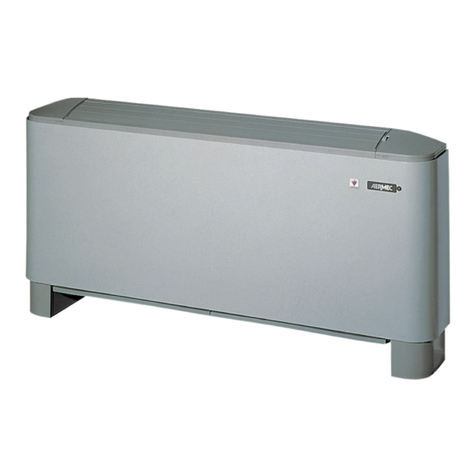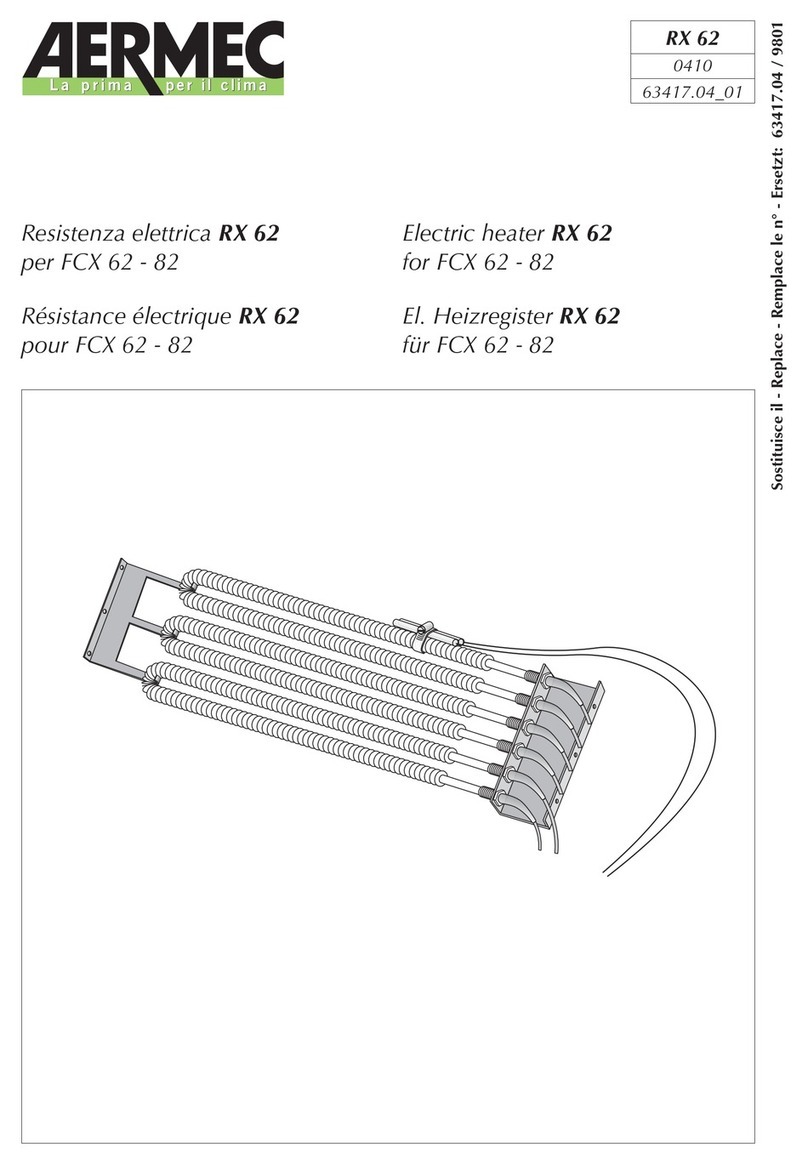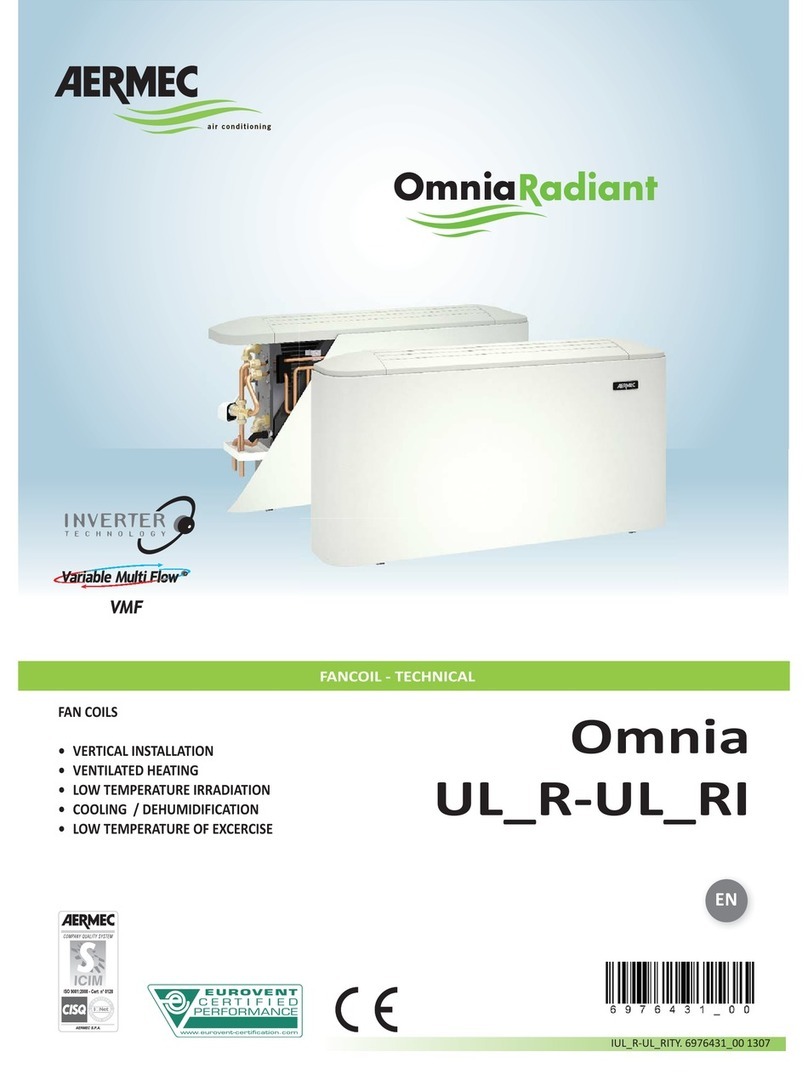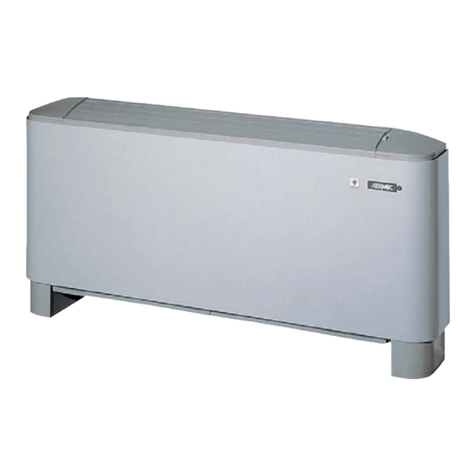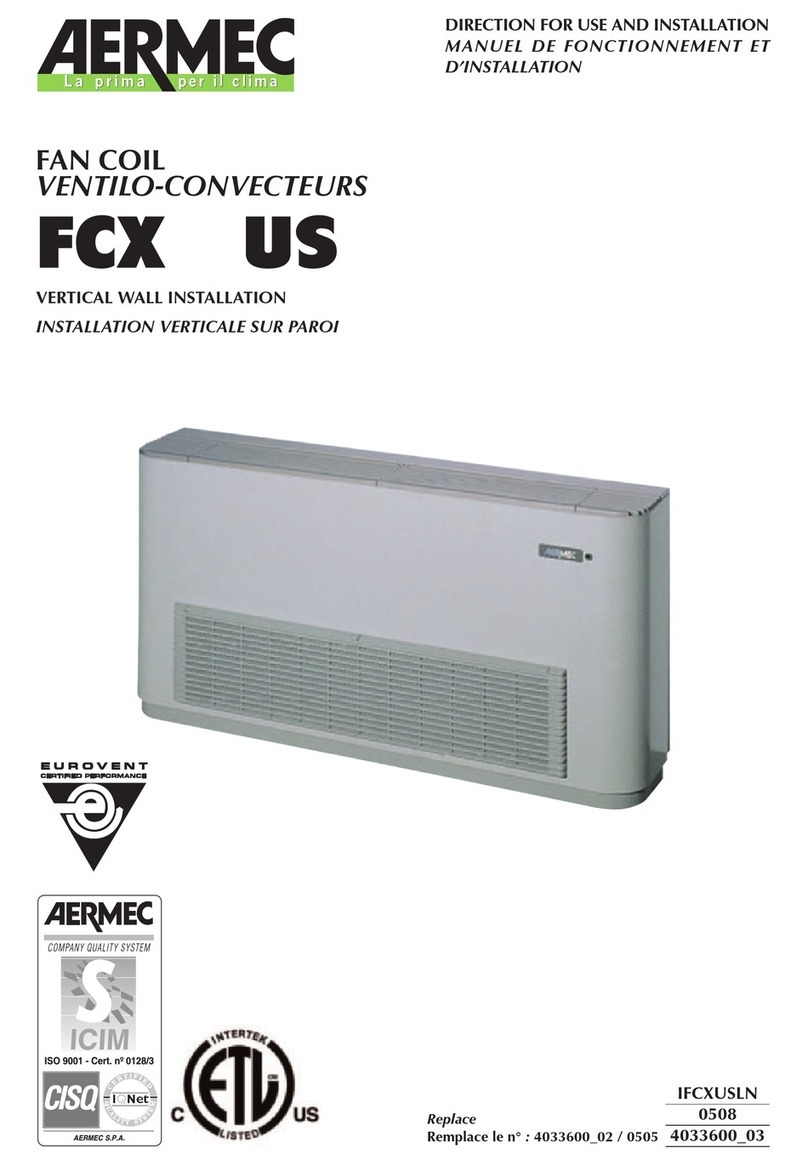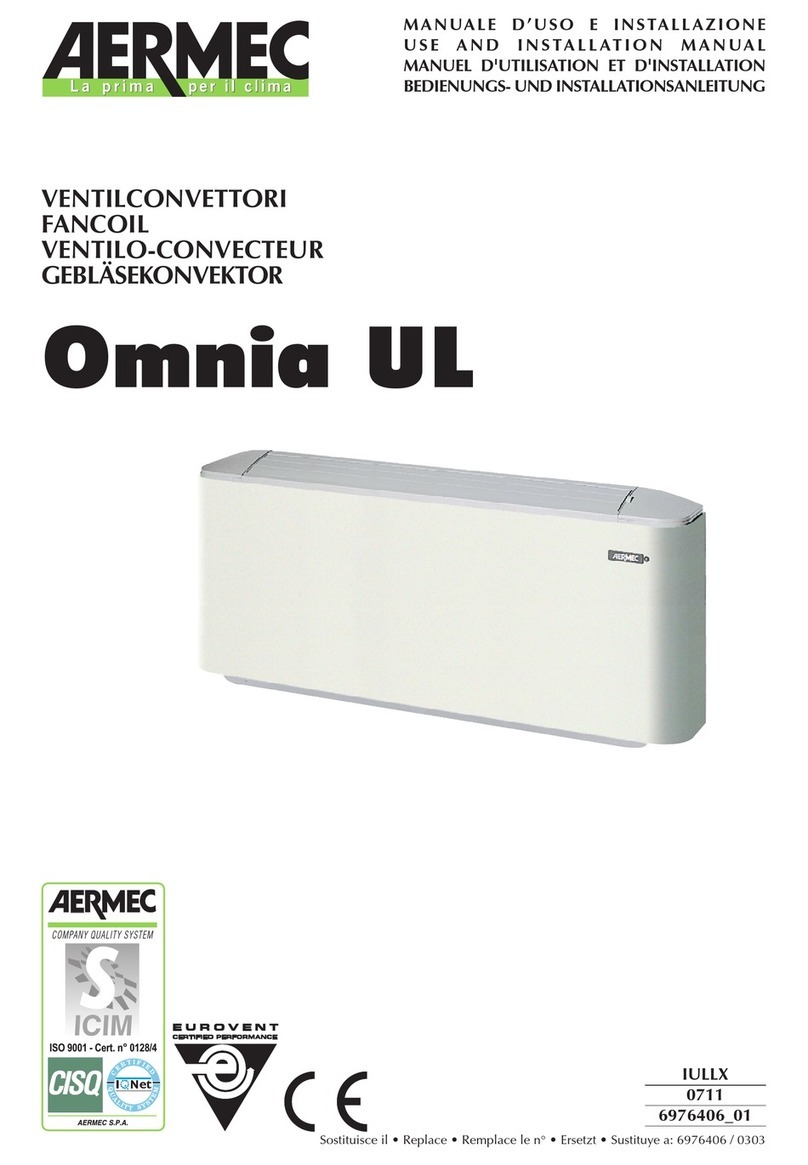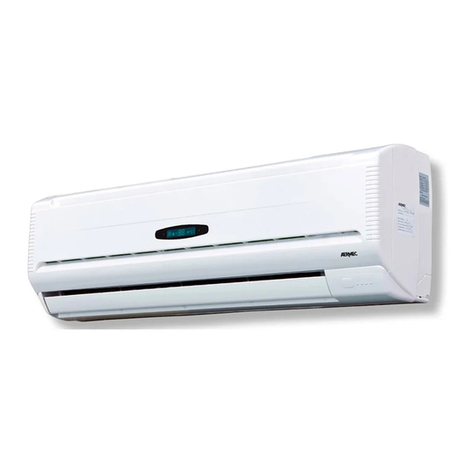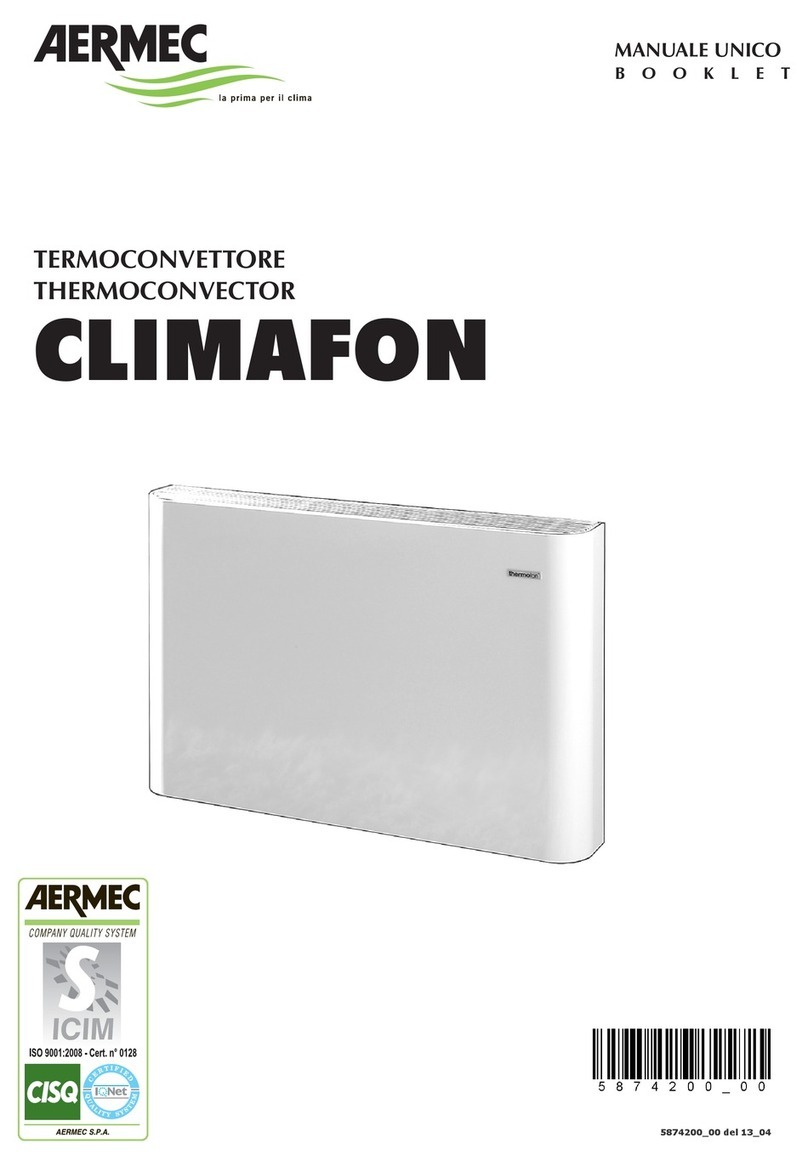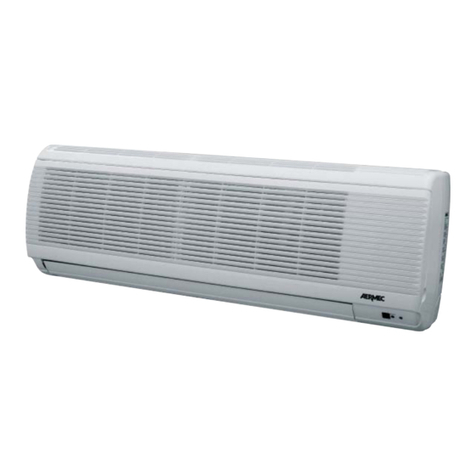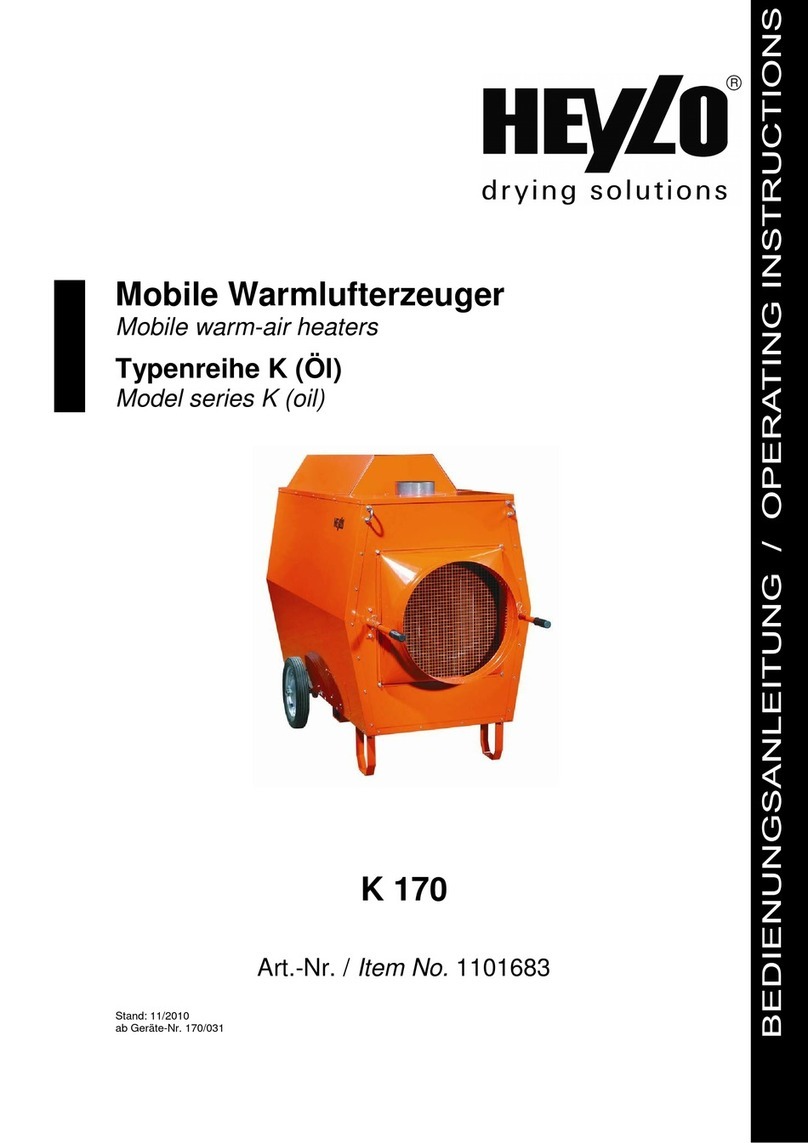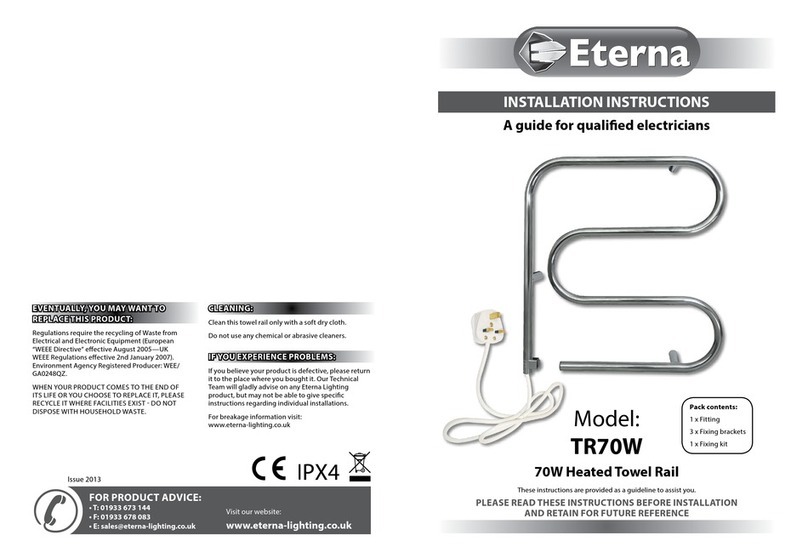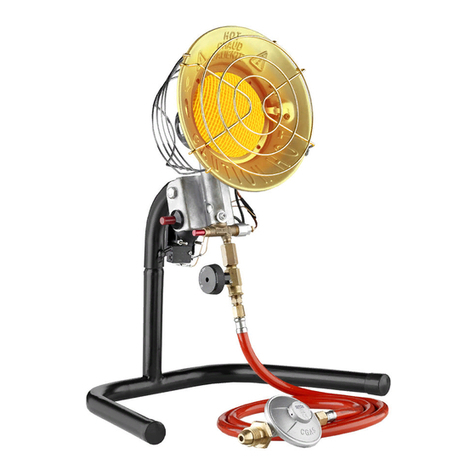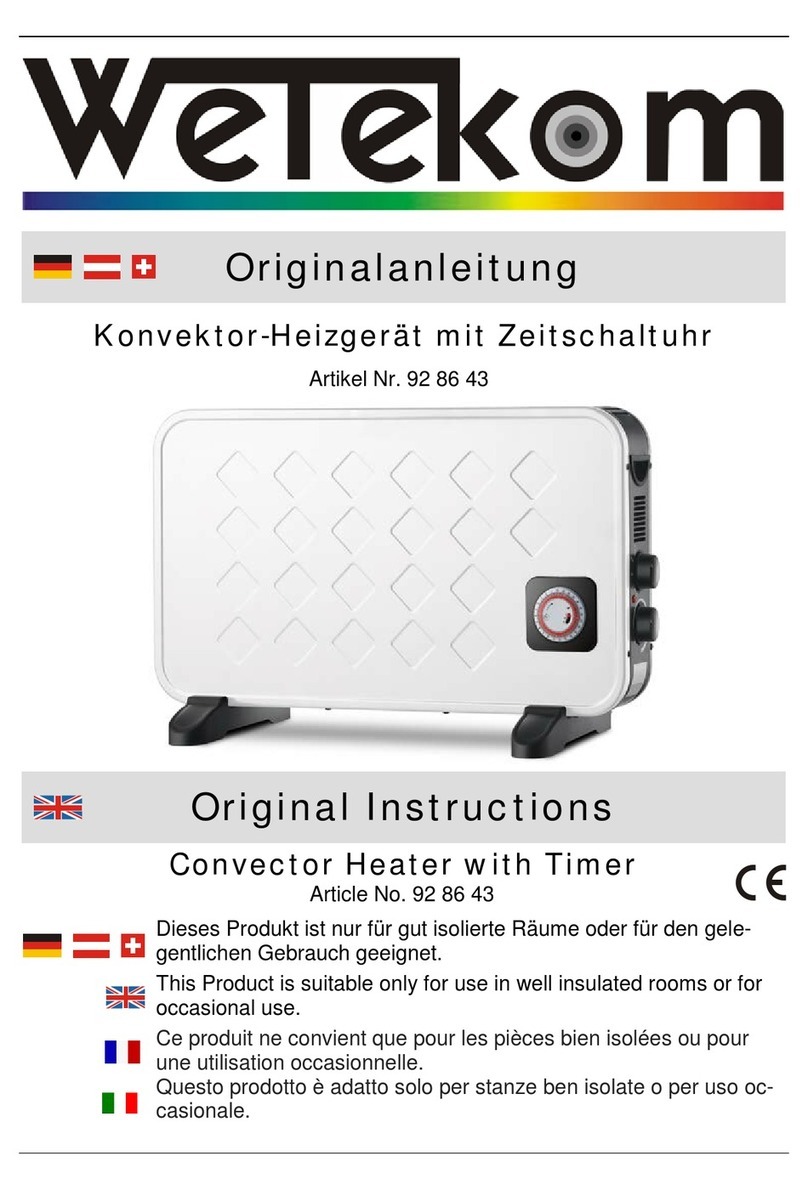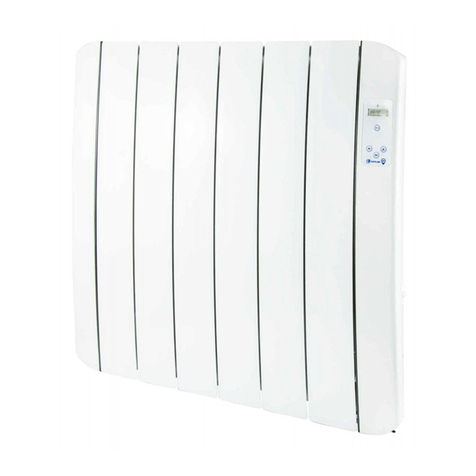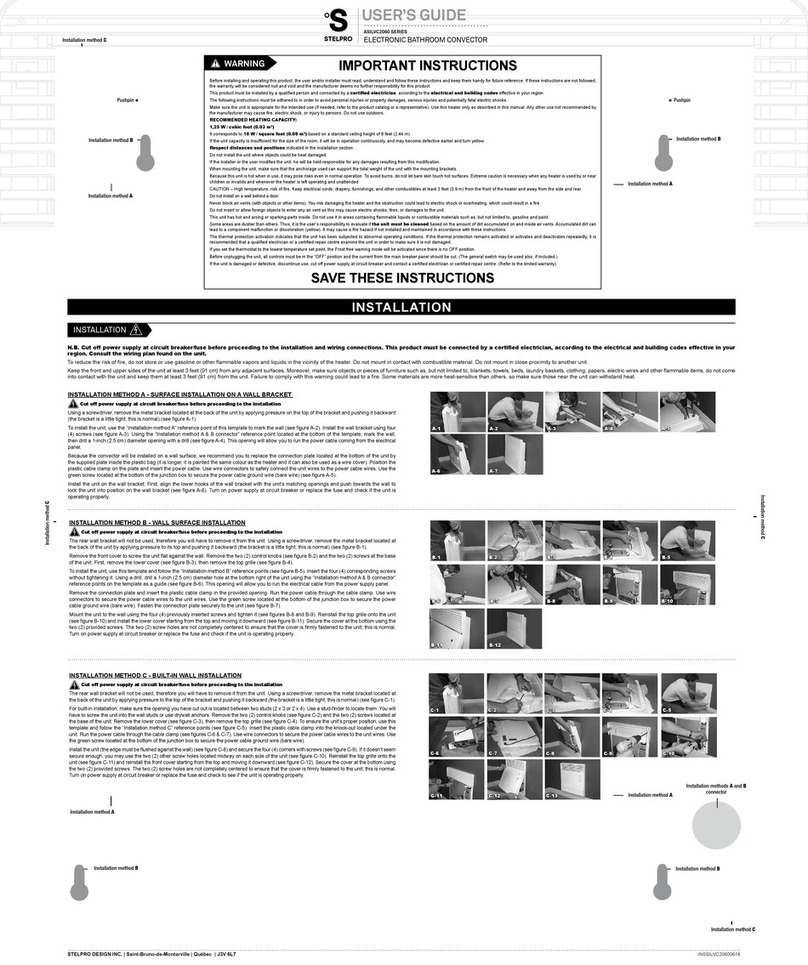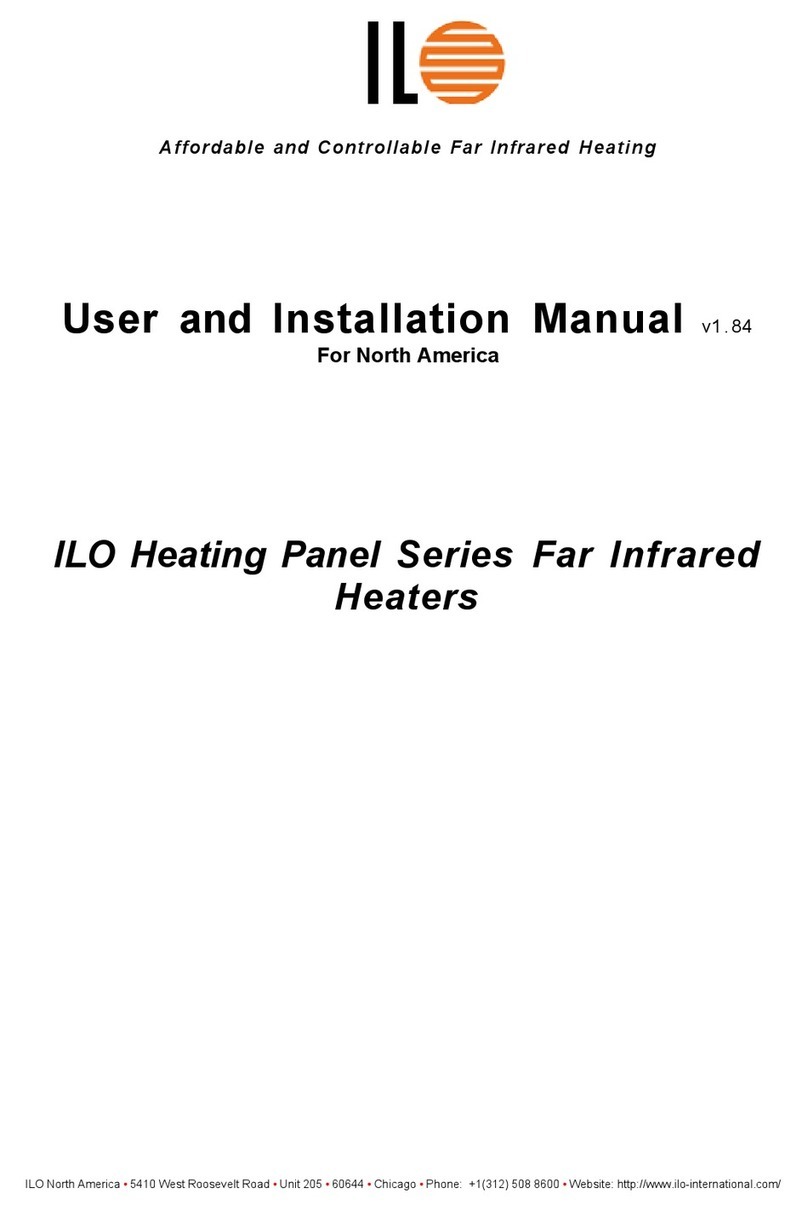
IT EN FR DE ES
6UL_S 2011 - 5217100_04
AVVERTENZE GENERALI
AVVERTENZE SULLA SICUREZZA E NORME D'INSTALLAZIONE
• Vengono qui riportate le indicazioni essenziali per una corretta
installazione delle apparecchiature. Si lascia comunque
all’esperienza dell’installatore il perfezionamento di tutte le
operazioni a seconda delle esigenze speciche.
• Non modicare o manomettere le unità in quanto si possono creare
situazioni di pericolo ed il costruttore non sarà responsabile di
eventuali danni provocati. La validità della garanzia decade nel caso
non siano rispettate le indicazioni menzionate in questo manuale.
• Prima di iniziare qualsiasi lavoro è necessario LEGGERE
ATTENTAMENTE LE ISTRUZIONI E FARE DEI CONTROLLI DI SICUREZZA
PER EVITARE QUALSIASI PERICOLO.
• Tutto il personale addetto deve essere a conoscenza delle operazioni
e dei pericoli che possono insorgere nel momento in cui si iniziano
tutte le operazioni di installazione dell'unità.
• L’unità deve essere installata in posizione tale da consentire
facilmente la manutenzione ordinaria (pulizia del ltro) e
straordinaria.
ATTENZIONE: il ventilconvettore è collegato alla rete elettrica ed al
circuito idraulico, un intervento da parte di personale non provvisto di
specica competenza tecnica può causare danni allo stesso operatore,
all’apparecchio ed all’ambiente circostante.
ATTENZIONE: L'apparecchio deve essere installato conformemente
alle regole impiantistiche nazionali.
ATTENZIONE: prima di eettuare qualsiasi intervento, assicurarsi che
l’alimentazione elettrica sia disinserita.
ATTENZIONE: Installare un dispositivo, interruttore generale o spina
elettrica che consenta di interrompere completamente l'alimentazione
elettrica dall'apparecchio.
ATTENZIONE: Per proteggere l’unità contro i cortocircuiti, montare
sulla linea di alimentazione un interruttore onnipolare magnetotermico. Al
ne di evitare ogni pericolo dovuto al riarmo accidentale del dispositivo
termico di interruzione, questo apparecchio non deve essere alimentato
con un dispositivo di manovra esterno, quale un temporizzatore, oppure
essere connesso a un circuito che viene regolarmente alimentato o
disalimentato dal servizio.
ATTENZIONE! PERICOLO! È vietato qualsiasi uso del dispositivo al di
fuori di quanto espressamente indicato da Aermec.
ALIMENTARE IL VENTILCONVETTORE SOLO CON LA TENSIONE
INDICATA NELLA TARGHETTA
Utilizzando alimentazioni elettriche diverse il ventilconvettore può subire
danni irreparabili.
ANOMALIE DI FUNZIONAMENTO
In caso di funzionamento anomalo, togliere tensione all’unità, poi ridare
tensione e procedere ad un riavvio dell’apparecchio.
Non tentare di riparare l'unità da soli, è molto pericoloso!
Se il problema si ripresenta, chiamare tempestivamente il Servizio
Assistenza di zona.
NON STRATTONARE IL CAVO ELETTRICO
È molto pericoloso tirare, calpestare, schiacciare o ssare con chiodi o
puntine il cavo elettrico di alimentazione.
Il cavo danneggiato può provocare corti circuiti e danni alle persone.
CAVO DI ALIMENTAZIONE ELETTRICA
Se il cavo di alimentazione è danneggiato, esso deve essere sostituito
con un cavo nuovo di sezione adeguata. Far eseguire la riparazione
da “Personale provvisto di specica competenza tecnica”, in modo da
prevenire ogni rischio.
Non riparare i cavi rovinati.
Per l’alimentazione elettrica usare cavi integri e con sezione adeguata al
carico.
NON INFILARE OGGETTI SULL’USCITA DELL’ARIA
Non inserire oggetti di nessun tipo nelle feritoie di uscita dell’aria.
Ciò potrebbe provocare ferimenti alla persona e danni al ventilatore.
• Le unità Omnia ULSsono costruite secondo gli standard tecnici
e le regole di sicurezza riconosciute. Sono progettate per il
riscaldamento e il rarescamento dell’aria ambiente, e dovranno
essere destinate a questo uso compatibilmente con le loro
caratteristiche prestazionali.
• È esclusa qualsiasi responsabilità contrattuale ed extracontrattuale
dell’Azienda per danni causati a persone, animali o cose, da errori di
installazione, di regolazione e di manutenzione o da usi impropri.
Tutti gli usi non espressamente indicati in questo manuale non sono
consentiti.
• Durante le fasi di installazione, manutenzione e pulizia, dotarsi di
adeguati Dispositivi di Protezione Individuale (DPI).
• L’unità non deve essere usata come ricovero di attrezzature, parti
di ricambio. Qualsiasi altro utilizzo dierente da quello esposto nel
presente manuale può generare pericoli ed è pertanto vietato.
• ATTENZIONE: i collegamenti elettrici, i collegamenti idraulici,
l’installazione dei ventilconvettori e dei loro accessori devono
essere eseguiti solo da soggetti in possesso dei requisiti tecnico-
professionali di abilitazione all’installazione, alla trasformazione,
all’ampliamento e alla manutenzione degli impianti ed in grado
di vericare gli stessi ai ni della sicurezza e della funzionalità
(in ottemperanza alla legislazione nazionale vigente nel paese
di destinazione), in questo sto manuale saranno identicati
anche come: tecnico abilitato e qualificato provvisto di specifica
competenza tecnica.
• AERMEC non si assume nessuna responsabilità per danni
insorti a causa della mancata osservanza di queste istruzioni.
• Prima dell’installazione controllare che l’unità non abbia subito danni
durante la fase di trasporto:
• l’utilizzo dell'unità danneggiata potrebbe risultare pericolosa;
• il piano d’appoggio deve essere in grado di sostenere il peso dell’unità.
Nota:
Per ogni futuro riferimento e per ogni comunicazione con AERMEC
S.p.A. è necessario indicare il numero di matricola.
CONSERVAZIONE DELLA DOCUMENTAZIONE
• Consegnare le istruzioni con tutta la documentazione complementare
all'utilizzatore dell'unità che si assumerà la responsabilità per la
conservazione delle istruzioni anché esse siano sempre a disposizione
in caso di necessità.
TRASPORTO
• Per trasportare l’unità in sicurezza riferirsi alle indicazioni del peso
presenti nella targhetta.
• In ogni caso il trasporto deve avvenire con le seguenti precauzioni:
• l’unità e gli eventuali accessori non devono essere sottoposti ad urti
violenti per non pregiudicare l’integrità della struttura e dei componenti
interni;
• l’unità e gli eventuali accessori, durante il trasporto, devono essere
protetti in modo che non possano subire urti, per questo devono essere
adeguatamente bloccati sul piano di trasporto mediante funi o qualsiasi
altro mezzo che ne impedisca il movimento;
• l’unità e gli eventuali accessori, durante il trasporto e lo stoccaggio,
devono essere sempre protetti dalle intemperie.
VERIFICHE AL RICEVIMENTO
• Al ricevimento dell’unità è necessario eseguire un primo controllo visivo
per vericare:
• la corretta corrispondenza dell’ordine con quanto riportato nei
documenti di trasporto;
• l’integrità dell’imballo;
• l’integrità dell’unità;
• la presenza di tutti i componenti.
• Nel caso venissero riscontrati danni o mancati componenti è necessario
segnalarli sui documenti di trasporto.

